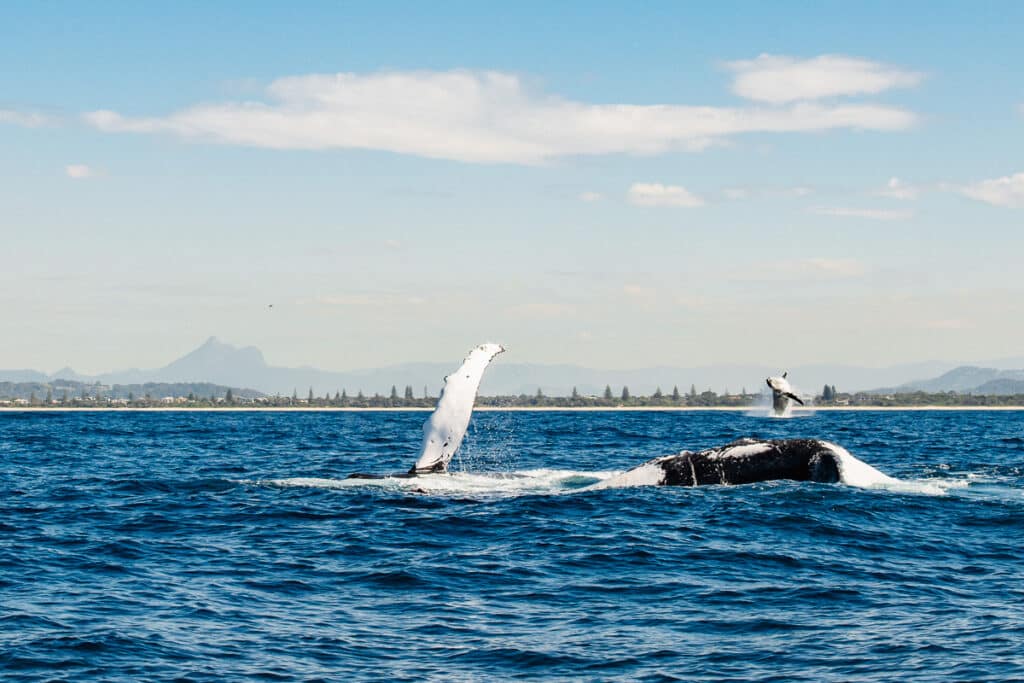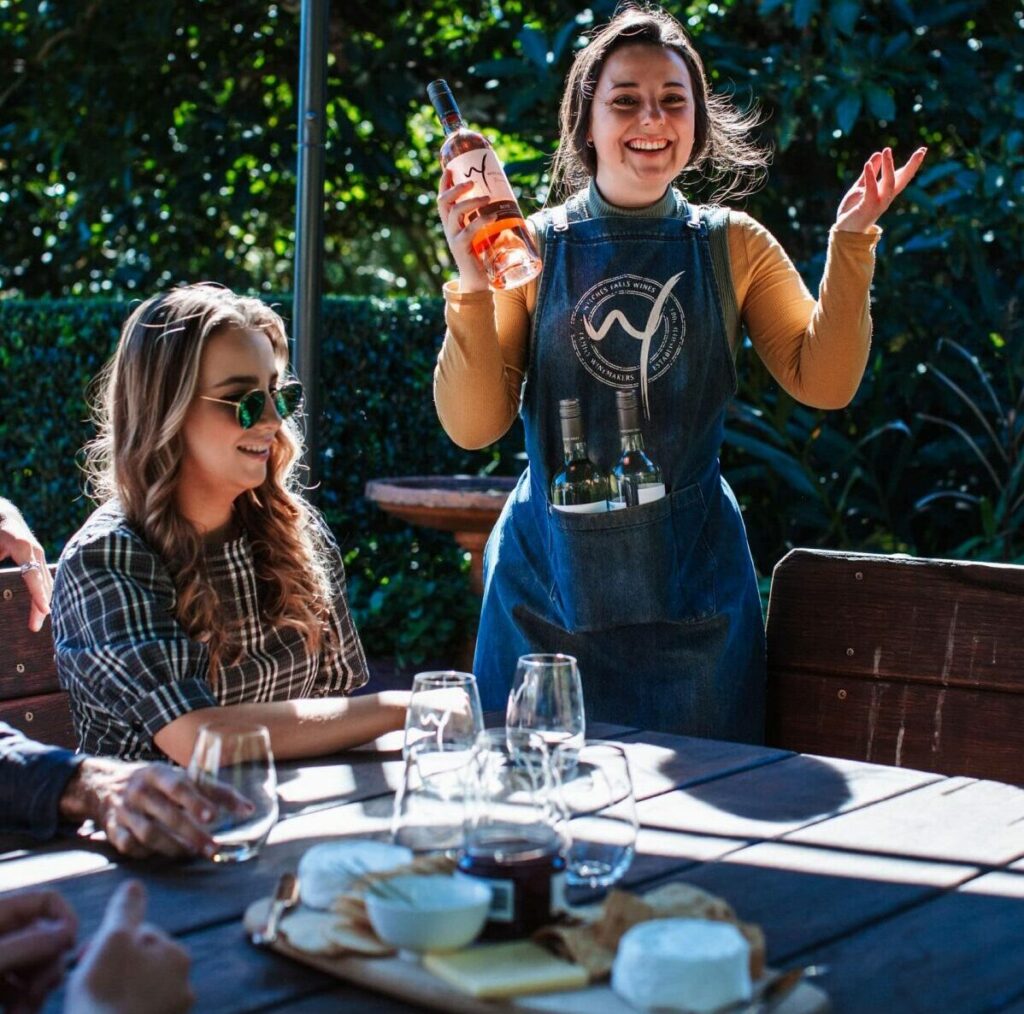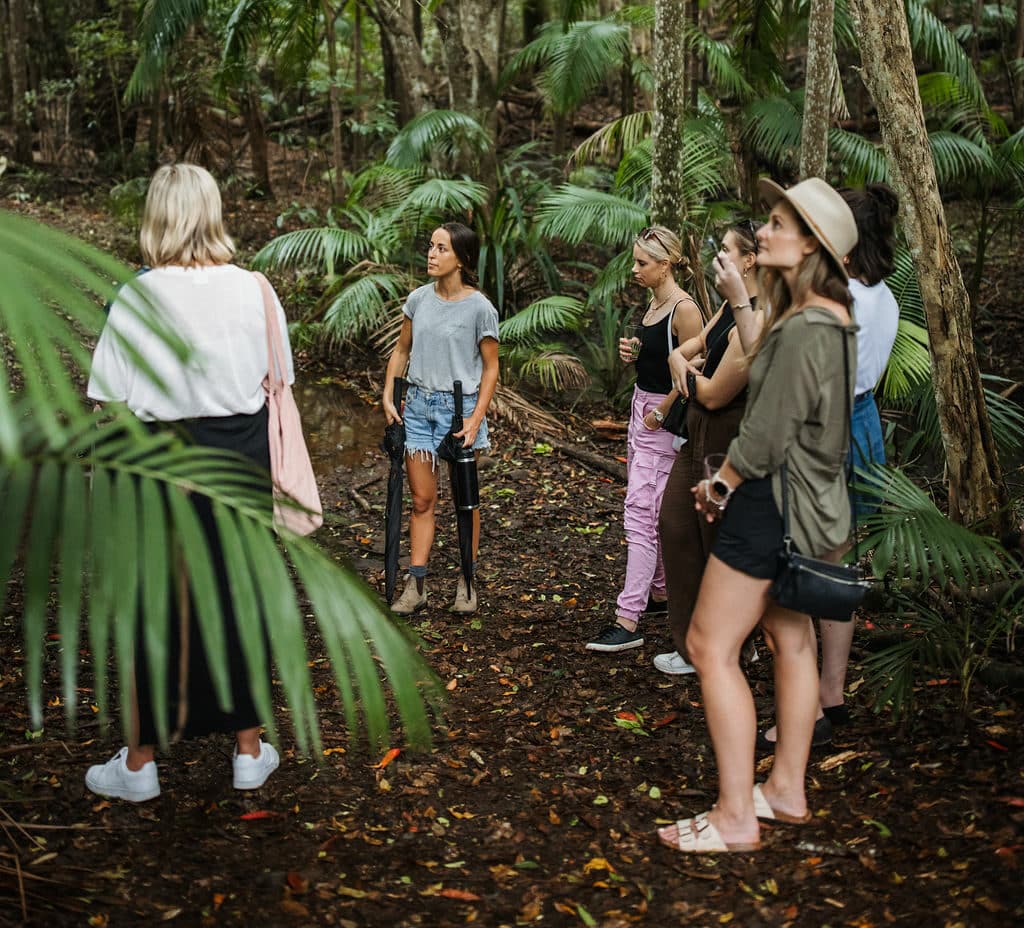We sat down with Lachlan Taylor from Cooly Eco Adventures to talk all things ocean, sustainability, whales and much more!
Lachlan’s lifelong love affair with the ocean started as a child living aboard ‘Hi Moon,’ a timeless vessel exploring Moreton Bay and beyond. His journey led him from diving in the Cook Islands to babysitting yachts in the south of France, but it was a transformative encounter with Minke Whales during a research expedition that set him on a mission.
Today, Cooly Eco Adventures offers eco-conscious and awe-inspiring experiences, including swimming with whales, with a focus on environmental sustainability and education. Whether you’re a seasoned sea explorer or a first-time adventurer, join Lachlan on a journey to create champions for marine life and our precious oceans!
“Can you tell us a little bit about you and your practice?”
Growing up on a boat throughout Moreton Bay, I was very fortunate, to say the least. Our family boat, ‘Hi Moon,’ was a timber bay cruiser built in the 1960s, and my mum and I used to live on it for months at a time. We would take it up to the Barrier Reef and back, and she taught me a lot. So my passion for the ocean started very young. Taking the boat to the Great Barrier Reef when I was 16 are some of my earliest memories of Humpbacks too. As the vessel only went 8 knots at the best of times, you would often be cruising at the same pace as some of the pods.

Having that connection to the sea at such a young age, not just through boating but also surfing and freediving, took me around Australia and the world. I had many different jobs on various vessels and in different places around the world, from dive boats in the Cook Islands to babysitting millionaires’ boats in the south of France.
But the first time I swam with whales was 14 years ago while working on a research expedition for Minke Whales off of Cairns. As the deckhand, there wasn’t often time to join in on the fun, as the captain was an old-school type who didn’t speak much and never let me rest for too long. However, on one occasion when about 5/6 Minke Whales were swimming around the boat, I hopped in with the rest of the scientists, and I think it changed me quite a lot after that experience. For whatever reason as well, the whales loved me. I was the one they kept coming over to and swimming under the closest. It’s a memory I still have and cherish to this day, as if it happened just last week!
“What inspired you to start Cooly Eco Adventures and offer experiences like the whale swimming experiences?”
The first job I got as a commercial skipper was driving a whale-watching boat out of the Tweed River for ‘Cooly Dive.’ I’d been working as the Deckhand/Divemaster for about a year prior and was familiar with whales already. But driving a boat next to whales, keeping your pace, and being in the right spot at the right time when they surface is harder than you think! My boss at the time explained to me that there’s actually quite an art to it. So too with trying to swim with whales! Probably more so.

Prior to Cooly Eco Adventures being born, I spent about 5 years off the coast of Coolangatta in my own very small 5.5m RIB (inflatable) trying to figure out exactly this! I was trying to figure out how this could be achieved safely and sticking to the rules. Not only was no one offering the experience off the Gold Coast/Coolangatta, but the way most tourism companies were operating, I was seeing first-hand having worked for many of them the pollution and waste being left behind by the customers and the company itself. (All of which were labelled “Eco-Certified Tourism”…whatever that means!)
My mission is to provide the most environmentally conscious, informative, and fun seafaring eco-adventures in Australia. I wanted to operate on a daily basis having the absolute zero or as close to zero impact on the environment as we possibly can, whilst connecting people to the ocean and the marine life within it. When people step off the boat and have had an amazing time onboard and had an experience that was truly profound and then become champions for our marine life and the oceans brings me such joy and that is why I get up in the morning!
“How do you prioritise sustainability to minimise the impact on the marine environment during the dives or other tour experiences?”
In our journey so far, I believe we’ve achieved significant milestones in sustainability since we began operating in July 2020, resulting in positive environmental outcomes.
Hydrogen Fuel System Implementation: One of our notable achievements has been the installation of a hydrogen fuel system in our company’s Land Cruiser. This move has reduced our dependence on fossil fuels and minimized carbon emissions, showcasing our commitment to adopting cleaner and more sustainable transportation options.
Elimination of Single-Use Plastics: We’ve successfully phased out the use of single-use plastics in our daily operations. Instead, we’ve transitioned to compostable coffee cups and fruit trays, which not only reduce waste generation but also promote environmentally friendly alternatives. This step has significantly reduced our plastic footprint and contributed to a healthier marine ecosystem.
Comprehensive Waste Management: Onboard our vessels, we’ve implemented a comprehensive waste management system. We diligently sort and separate all waste acquired during tours, ensuring that recyclable materials are properly recycled and organic waste is composted. This approach minimizes the amount of waste sent to landfills and supports a circular economy.
Investment in Sustainable Equipment: We’ve strategically invested in high-quality wetsuits, snorkels, and masks. By selecting top-of-the-range equipment, we prioritize durability and longevity, reducing the need for frequent replacements. This sustainable approach not only minimizes waste but also ensures the comfort and safety of our guests.
Environmental Education and Awareness: We’ve expanded our environmental education programs for both guests and crew members. Through engaging presentations and discussions, we raise awareness about marine conservation, sustainable practices, and the importance of protecting our natural environment. By fostering a sense of responsibility and stewardship, we aim to inspire positive change and create a more sustainable future.
“What types of sea life can patrons expect to encounter during the tours?”
Whale watching, 99% of the time, sees us spotting Humpback whales, but occasionally we do glimpse Minke Whales off the coast here – we saw one last month! It randomly jumped out of the water and breached twice, about 30m from the boat, and then we never saw it again! Sometimes, Southern Right Whales and their calves, and also Killer whales, are spotted once a year off the coast here as they follow this migration, hunting the calves.
On any given day, we will encounter multiple different species of dolphins, with the Bottlenose being the most frequently prevalent. There is a local pod just off Fingal Heads of about 40-50 strong!

Where we take you to snorkel with the turtles, we have seen all species of turtles out here, but mainly we will see the Green Sea Turtle, Hawksbill, and the Loggerhead. Along with an array of tropical, sub-tropical, and temperate species of fish – approximately over 200 different species. Octopus, Eagle Rays, Moray Eels, and even Manta Rays, just to name a few. It is actually quite an amazing place, and I would easily compare it to the Great Barrier Reef.
It is also one of the only places in Australia where you can see turtles all year round!
“How experienced should patrons be as divers or swimmers to participate in your trips?”
This varies depending on the tour. For the swim with whales tour, you must have snorkelling experience and be able to swim at least 25m unassisted through the water. This ensures we can confidently deliver the experience. If you haven’t yet snorkelled, then you can try our swim with turtles tour first to gain some new skills and get ready for the open ocean! On our swim with turtles tour, we have taken kids from the ages of 6 to adults the age of 90, taught them how to snorkel, and showed them the amazing underwater world! However, the ability to swim is the only real requirement.
“Can you describe some of the most memorable moments patrons have witnessed on your trips?”
There are too many instances that come to mind straight off the bat, but one memorable experience occurred in our first year of operating. It was 14th September, and only two people had booked on. I decided to run the Whale Swim tour anyway, as I knew the conditions were extremely good and I wanted to try to swim with them and potentially get some content. Some of the crew on their day off came out as well.
We drove around into the bay just off Kirra Point and stopped to look for whales. After about 15 minutes, one of the crew thought they saw a whale surface, but it did not exhale, creating the blow you normally see when they come up to breathe. We all laughed and started ribbing her, as if she was seeing things. But then, out of nowhere, a huge Humpback swam directly under the boat! The excitement began, but we didn’t see it again… We drove ahead about 300m or so and just decided to get in the water, hold onto the float line, and hope for the best… Within about 5 minutes, one of the passengers actually saw it first as it swam about 3m underneath us, looking around at us all. This whale then proceeded to play and interact with us for more than 45 minutes. At one point, I was standing on the ladder of the boat changing lenses, with the whale just 1 metre from me and the boat, as if it was my pet or something. The two onboard, who had paid to come out, were quite literally in shock on the way home, as if thinking… did that really just happen?
“What should patrons expect in terms of logistics, including the duration of the experience and any specific requirements?”
Whale swims are approximately 3.5 hours but can be longer; if we can extend the tour to make it happen for you, we will!
Upon arrival, you will be checked in, and if you have not already done so via our smart digital waiver, you will sign a waiver form. We will gear you up with everything you need and then proceed to give a rundown of the day and explain how we are going to attempt to swim with whales.
Afterwards, we will watch a short safety video on the boat and head off for the Pacific Ocean and the Humpback Highway.




